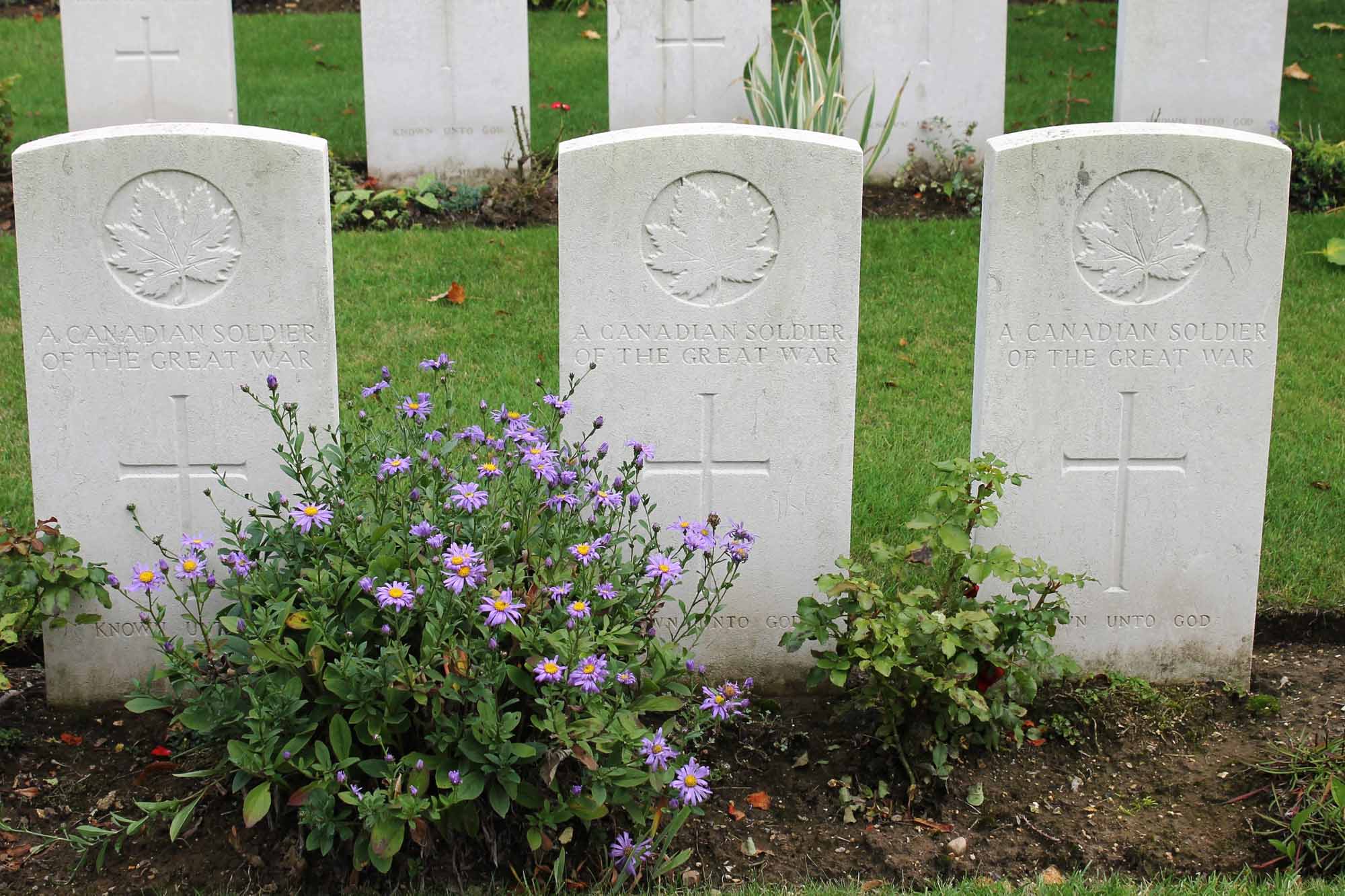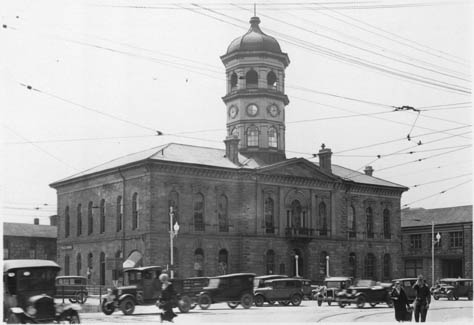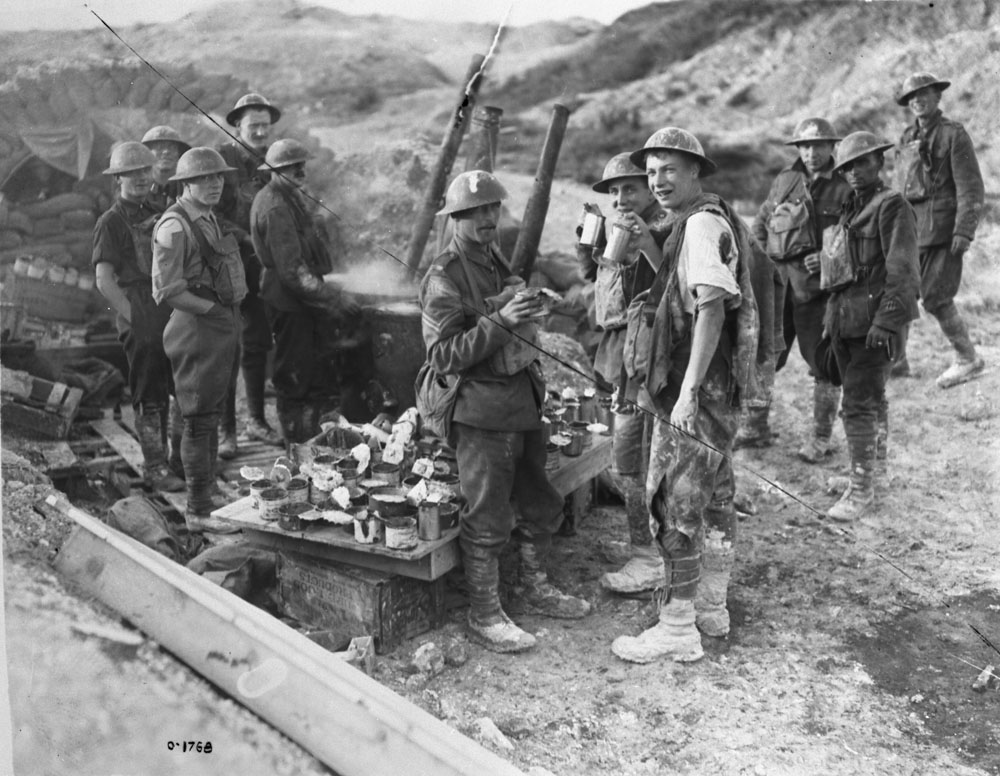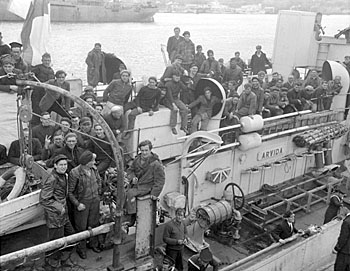Browse "Wars"
-
Article
Documenting the Second World War
When Canada declared war on Germany on 10 September 1939, tens of thousands of Canadians enlisted to serve in the army, navy, air force and supporting services. The military scrambled to buy equipment, train recruits and prepare for war. Little thought was given, at first, to documenting the war effort. By 1940, however, the military was recruiting historians, most notably Charles Stacey, to collect records and write accounts of Canadian operations. In the following years, artists, photographers and filmmakers also served with the various branches of the armed forces. Today, their diligent work provides a rich visual and written catalogue of Canada’s history in the Second World War.
"https://d2ttikhf7xbzbs.cloudfront.net/media/media/9b070ac4-e744-4afa-a3fc-e60098f649e3.jpg" // resources/views/front/categories/view.blade.php
https://d2ttikhf7xbzbs.cloudfront.net/media/media/9b070ac4-e744-4afa-a3fc-e60098f649e3.jpg
-
Article
Evolution of Canada’s Shock Troops
The Canadian Corps, a force of 100,000 soldiers by late 1916, fought for the entire war on the Western Front, along a static trench system that ran 700 kilometres from Switzerland to the North Sea.
"https://d2ttikhf7xbzbs.cloudfront.net/media/media/2f8db20f-dd88-4437-8817-23223400ed03.jpg" // resources/views/front/categories/view.blade.php
https://d2ttikhf7xbzbs.cloudfront.net/media/media/2f8db20f-dd88-4437-8817-23223400ed03.jpg
-
Article
Exercise Tocsin B
Exercise Tocsin B was a nationwide nuclear preparedness drill that lasted 24 hours between 13 and 14 November 1961. It was the last of three national survival exercises named Tocsin in 1960–61. It was also the largest and most widely publicized civil defence drill ever held in Canada. This Cold War exercise run by the Canadian Army simulated the impact of thermonuclear warfare in Canada. Its goals were to show how the state would warn Canadians of such an attack and how government would continue during the crisis. By raising popular awareness of the potential for a devastating nuclear attack, Tocsin B showed Canadians what was at stake in the Cold War.
"https://d2ttikhf7xbzbs.cloudfront.net/media/new_article_images/ExerciseTocsinB/EMO_excerpt.JPG" // resources/views/front/categories/view.blade.php
https://d2ttikhf7xbzbs.cloudfront.net/media/new_article_images/ExerciseTocsinB/EMO_excerpt.JPG -
Article
Fencibles in the War of 1812
During the Napoleonic Wars, the British government raised regiments known as "fencibles" for home service. These temporary units were used to protect British interests wherever the units were raised, in Great Britain or North America, and were not to be deployed for overseas duty on foreign soil.
"https://development.thecanadianencyclopedia.ca/images/tce_placeholder.jpg?v=e9dca980c9bdb3aa11e832e7ea94f5d9" // resources/views/front/categories/view.blade.php
https://development.thecanadianencyclopedia.ca/images/tce_placeholder.jpg?v=e9dca980c9bdb3aa11e832e7ea94f5d9
-
Article
Ferry Command
Ferry Command was established early in WWII to improve aircraft deliveries to Britain from US factories, since surface shipping was too slow and the ships themselves were needed for other cargoes.
"https://d2ttikhf7xbzbs.cloudfront.net/media/media/86bfe704-ba22-4038-9c9b-801e1866ba02.jpg" // resources/views/front/categories/view.blade.php
https://d2ttikhf7xbzbs.cloudfront.net/media/media/86bfe704-ba22-4038-9c9b-801e1866ba02.jpg
-
Article
First World War (WWI)
The First World War of 1914–1918 was the bloodiest conflict in Canadian history, taking the lives of nearly 61,000 Canadians. It erased romantic notions of war, introducing slaughter on a massive scale, and instilled a fear of foreign military involvement that would last until the Second World War. The great achievements of Canadian soldiers on battlefields such as Ypres, Vimy and Passchendaele, however, ignited a sense of national pride and a confidence that Canada could stand on its own, apart from the British Empire, on the world stage. The war also deepened the divide between French and English Canada and marked the beginning of widespread state intervention in society and the economy. (This is the full-length entry about the First World War. For a plain-language summary, please see First World War (Plain-Language Summary).)
"https://d2ttikhf7xbzbs.cloudfront.net/media/media/11751af0-ec83-4753-8f2b-bb38ed576b7f.jpg" // resources/views/front/categories/view.blade.php
https://d2ttikhf7xbzbs.cloudfront.net/media/media/11751af0-ec83-4753-8f2b-bb38ed576b7f.jpg
-
Article
Fort Amherstburg and the War of 1812
A key site for controlling the western theatre of the War of 1812, Fort Amherstburg (now Fort Malden) owed its existence to the shifting boundaries on Lake Superior in the wake of British and American diplomatic and military disputes.
"https://d2ttikhf7xbzbs.cloudfront.net/media/media/d474d1e9-393d-4930-9241-243d33a89ef3.jpg" // resources/views/front/categories/view.blade.php
https://d2ttikhf7xbzbs.cloudfront.net/media/media/d474d1e9-393d-4930-9241-243d33a89ef3.jpg
-
Article
Frezenberg Ridge
Princess Patricia's Canadian Light Infantry, composed largely of British-born former regular soldiers, had gone to Flanders in December 1914 in advance of 1st Canadian Division as part of the British 27th Division.
"https://development.thecanadianencyclopedia.ca/images/tce_placeholder.jpg?v=e9dca980c9bdb3aa11e832e7ea94f5d9" // resources/views/front/categories/view.blade.php
https://development.thecanadianencyclopedia.ca/images/tce_placeholder.jpg?v=e9dca980c9bdb3aa11e832e7ea94f5d9
-
Macleans
Friendly Fire Victims Mourned
Canadians are not normally accustomed to outward displays of patriotic pride over their fallen warriors. Since 1948, more than 100 Canadians have lost their lives nobly in peacekeeping missions around the world, their passing hardly noted beyond their immediate families and regiments.This article was originally published in Maclean's Magazine on May 6, 2002
"https://development.thecanadianencyclopedia.ca/images/tce_placeholder.jpg?v=e9dca980c9bdb3aa11e832e7ea94f5d9" // resources/views/front/categories/view.blade.php
https://development.thecanadianencyclopedia.ca/images/tce_placeholder.jpg?v=e9dca980c9bdb3aa11e832e7ea94f5d9
-
Article
Guelph in the First World War
Guelph, Ontario, was typical of small Canadian cities during the First World War. Of its population of about 16,000, more than a third, 5,610, volunteered for military service; 3,328 were accepted. Today, 216 of their names are engraved on the city’s cenotaph. While Guelphites served overseas, the war had a profound and lasting effect on their hometown — an experience that provides an insight into wartime Canada.
"https://d2ttikhf7xbzbs.cloudfront.net/media/media/e38f8065-b481-40c7-9d21-690d7e0a84dc.jpg" // resources/views/front/categories/view.blade.php
https://d2ttikhf7xbzbs.cloudfront.net/media/media/e38f8065-b481-40c7-9d21-690d7e0a84dc.jpg
-
Article
HMCS Haida
The HMCS Haida is a “Tribal” Class destroyer that served in the Second World War and the Korean War. It is a National Historic Site operated by Parks Canada and is moored in Hamilton Harbour. The Haida is known as Canada’s “fightingest” warship.
"https://d2ttikhf7xbzbs.cloudfront.net/media/media/bdd8f002-5a0f-4adb-adc2-9afecd1e4bb1.jpg" // resources/views/front/categories/view.blade.php
https://d2ttikhf7xbzbs.cloudfront.net/media/media/bdd8f002-5a0f-4adb-adc2-9afecd1e4bb1.jpg
-
Article
Battle for Hill 70
The capture of Hill 70 in France was an important Canadian victory during the First World War, and the first major action fought by the Canadian Corps under a Canadian commander. The battle, in August 1917, gave the Allied forces a crucial strategic position overlooking the occupied city of Lens.
"https://d2ttikhf7xbzbs.cloudfront.net/media/media/60c335ab-7325-4faf-b25a-e2197d6da9b6.jpg" // resources/views/front/categories/view.blade.php
https://d2ttikhf7xbzbs.cloudfront.net/media/media/60c335ab-7325-4faf-b25a-e2197d6da9b6.jpg
-
Article
Hill 70 and Canadian Independence
Canada’s war of independence was the First World War. Unlike the Americans, our war of independence was not fought against the country from which we became independent, but alongside it. We started the war as a colony of Britain and ended it as an ally. The remarkable performance of the Canadian Corps and its first Canadian commander made these gains in autonomy possible.
"https://d2ttikhf7xbzbs.cloudfront.net/media/media/9dd8ed5e-dc70-4b32-a4d8-bbe7a5207248.jpg" // resources/views/front/categories/view.blade.php
https://d2ttikhf7xbzbs.cloudfront.net/media/media/9dd8ed5e-dc70-4b32-a4d8-bbe7a5207248.jpg
-
Article
Hindenburg Line
Hindenburg Line (Siegfried-Stellung), a system of fortified and entrenched reserve positions stretching 80 km southeast from Arras to Soissons, France, built by the Germans in the winter of 1916-17.
"https://development.thecanadianencyclopedia.ca/images/tce_placeholder.jpg?v=e9dca980c9bdb3aa11e832e7ea94f5d9" // resources/views/front/categories/view.blade.php
https://development.thecanadianencyclopedia.ca/images/tce_placeholder.jpg?v=e9dca980c9bdb3aa11e832e7ea94f5d9
-
Article
History of the Armed Forces in Canada
The armed forces are the land, naval and air forces commanded by the federal government for the purpose of defending Canada's security, protecting its citizens, and promoting its strategic interests at home or abroad. The armed forces have evolved since colonial times from small, local militia units to the modern professional military forces of today.
"https://d2ttikhf7xbzbs.cloudfront.net/media/media/27bfbefd-a613-47df-bd35-5e01ef6511ae.jpg" // resources/views/front/categories/view.blade.php
https://d2ttikhf7xbzbs.cloudfront.net/media/media/27bfbefd-a613-47df-bd35-5e01ef6511ae.jpg

